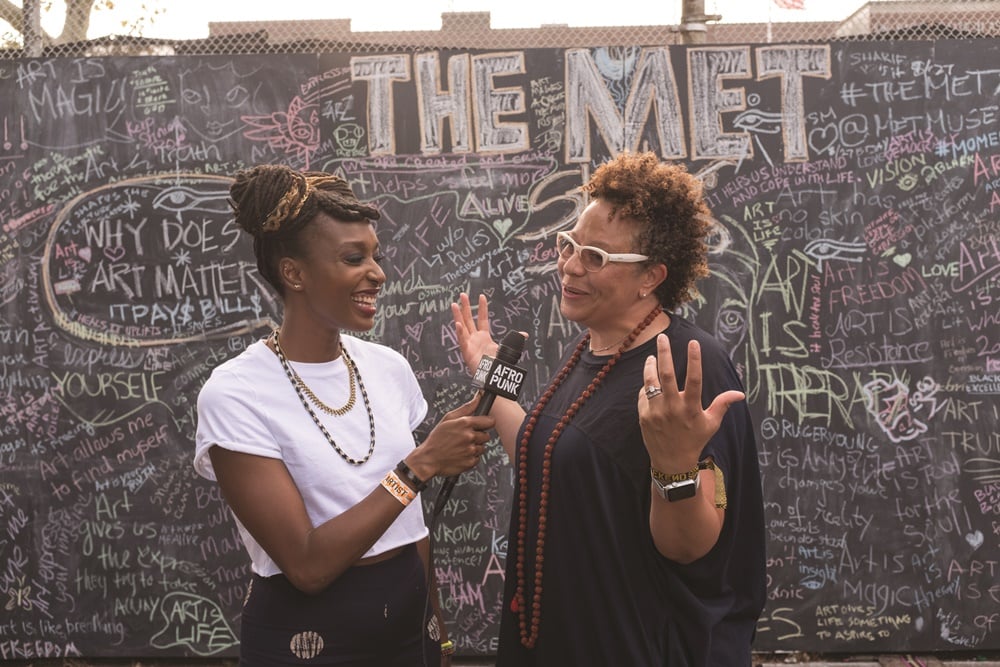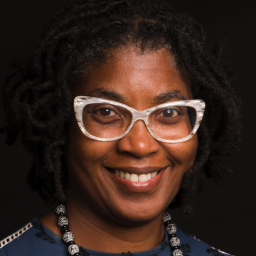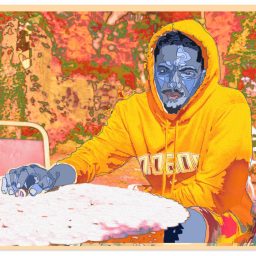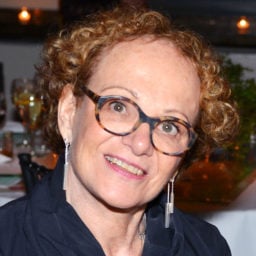It all started with a cold call.
Kemi Ilesanmi, the executive director of the Laundromat Project, a New York City-based nonprofit that brings art to unexpected places, recalls getting a very fortuitous call from the Chapel Hill, North Carolina-based Kenan Foundation in 2016. “Someone calls out of the blue and says they really appreciate your work and would like to support it financially in a very meaningful way,” Ilesanmi told artnet News. “It’s very much the dream scenario.”
That “someone” on the other end of the line was Dorian Burton, assistant executive director of the William R. Kenan Jr. Trust. The call was one of dozens, if not hundreds, Burton made a few years ago while researching an ambitious but unconventional philanthropic program. He had been scouring the nonprofit landscape for people and projects driving social change, relying heavily for guidance on a valuable new adviser: Sandra Jackson-Dumont, the Metropolitan Museum of Art’s dynamic chairman of education since 2014.
In recent years, the Kenan Trust—a foundation with tens of millions of dollars in assets built on the Standard Oil fortune—has become a quiet but highly influential force in cultural philanthropy. And it is using its largess to promote social practice art (a loose term for participatory, socially engaged art that encompasses everything from a development of restored homes in Houston to an immigrant services organization in Queens) in upstart and august organizations alike.
In addition to its atypical focus, Kenan is unusual in another way: It is fundamentally opposed to telling organizations how to do their job and exactly what to do with the money it donates. Burton approached organizations and asked the various leaders a simple question: “What do you need?”
Against Charity
Today, the Laundromat Project is one of 21 recipient organizations in the Kenan Trust’s unprecedented $6 million New York City Arts Collaborative. The initiative was introduced in 2017 with the Metropolitan Museum of Art and New York University’s Tisch School of the Arts as designated “anchors.”
Through a combination of direct financial support from Kenan for the handpicked nonprofits and the anchors facilitating an ongoing collaboration, all of the entities are working to explore how arts-based organizations can have a positive impact in the daily lives of diverse communities.
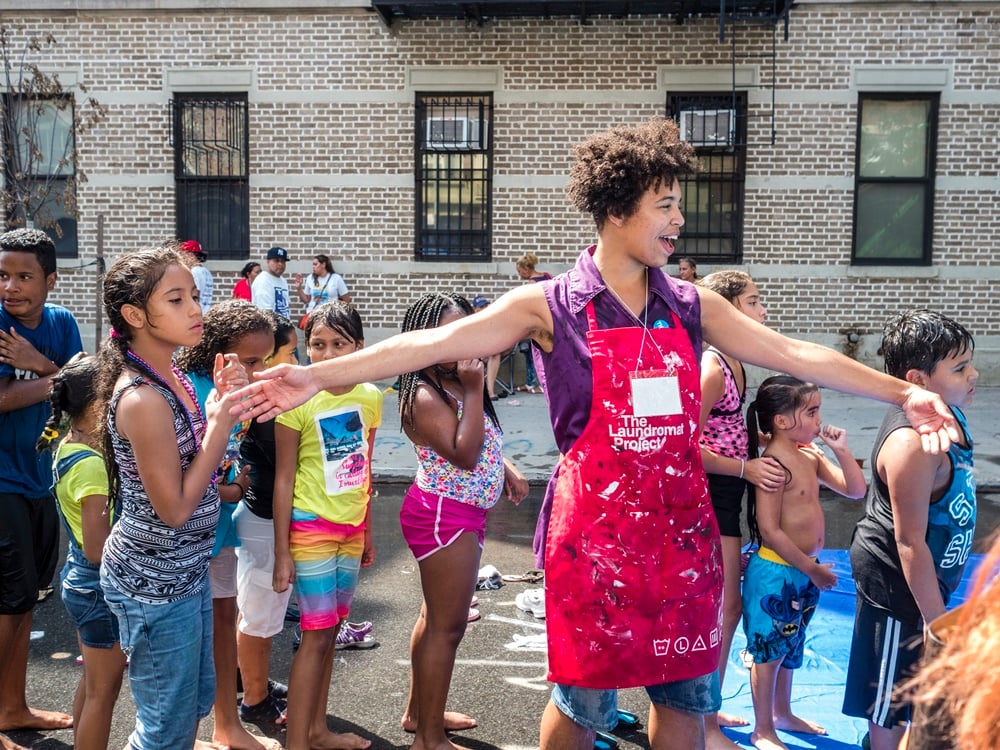
The Laundromat Project 2017 Create Change Fellow Nikomeh Anderson facilitates activities during the 2017 Kelly Street Annual Block Party. Photo: Osjua Newton; Courtesy of The Laundromat Project.
“We’re not an institution that just focuses on charity. We need to be an institution that focuses on justice,” Burton tells artnet News. “There is a real distinction between charity and social justice: I think ‘charity’ is a term that makes us feel comfortable at a cocktail hour. But when you’re talking about justice you’re actually talking about how you right a wrong. For us, being able to dive deep into this work fits with that.”
He adds: “At this moment in our country’s history, we need to dive deeper and look at what social justice and social practice in the arts look like.”
The Three Cs
Jackson-Dumont recounted her first meeting with Burton. “He said, ‘I’m really interested in working with institutions who are working with diverse communities, particularly black and brown people.'” Though she was more than happy to make recommendations, she expected her involvement to end there.
So the seasoned educator was surprised when Burton said he wanted her to be a “thought partner” on the project. “When I asked ‘What does that mean?’ he said, ‘You don’t just say yes to everything. You push back at us.'”
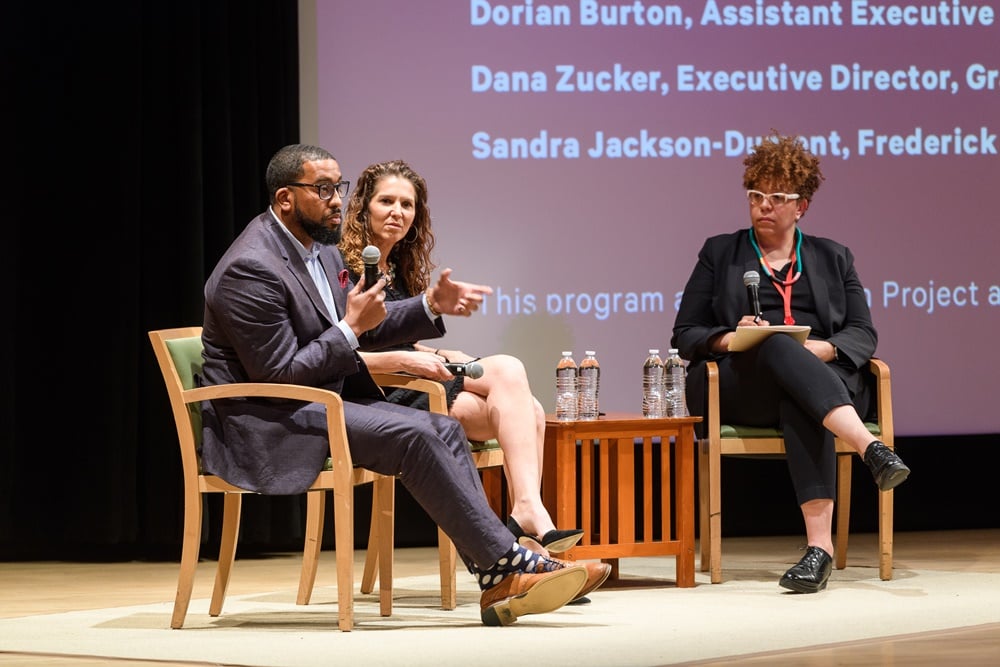
L to R: Dorian Burton, Gray Foundation executive director Dana Zucker, Sandra Jackson-Dumont. Photo: Filip Wolak.
From there, things moved quickly. After securing the approval of the museum’s then-director Thomas Campbell and president Daniel Weiss, she and Burton hammered out the details of how the Met fit into the larger picture.
Jackson-Dumont has extended her philosophy of what she dubs the “Three Cs” from the education department to the Kenan Foundation. “We work through the lens of ‘Collaborator/Catalyst/Convener,'” she says. “We value collaboration and believe in cultivating authentic relationships within and beyond the walls of the museum.”
Building a Community of Practice
The list of recipients of Kenan’s largess, who have been dubbed “cohorts,” range from a small one-person organization (STEM from Dance) to the literary nonprofit Urban Word NYC, the Brooklyn Museum, and Columbia University. The Guggenheim Museum‘s series of social practice works—most recently artist Shaun Leonardo’s workshop on gun violence—has been made possible by Kenan.
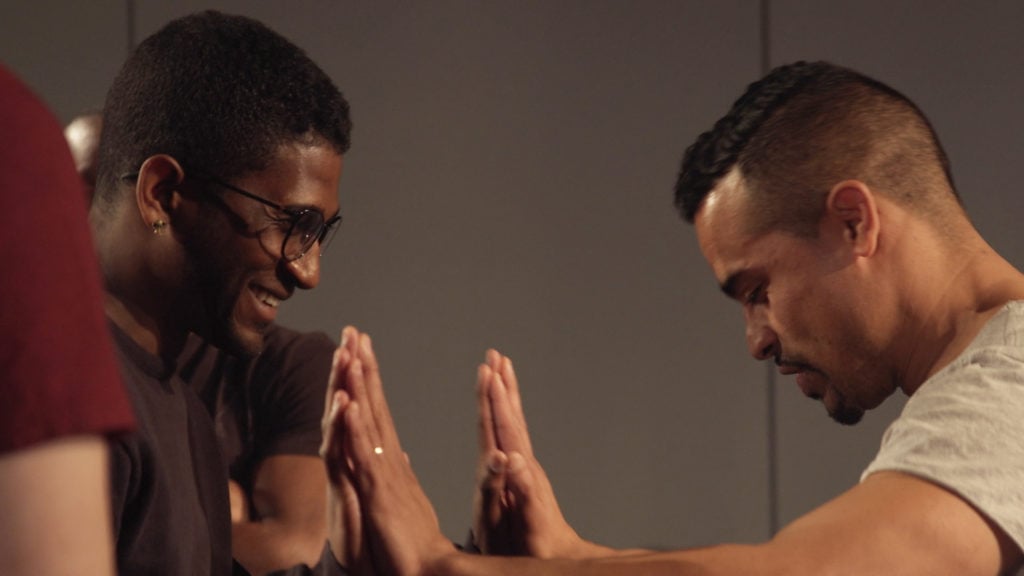
Participants at a workshop for Shaun Leonardo’s Primitive Games, Solomon R. Guggenheim Museum, 2018. Photography by Giacomo Francia. Courtesy of the Solomon R. Guggenheim Museum.
In June, the Met announced that it would use a king-sized $1.5 million Kenan grant to support an artist residency program dedicated to social change. The first recipients were performance artist Rashida Bumbray and multimedia artist Miguel Luciano. They are charged with making work connecting the Upper East Side institution to Bedford-Stuyvesant in Brooklyn and East Harlem, respectively.
In addition to quarterly meetings, the dialogue among cohort members is constant, ranging from the micro—like asking for assistance finding space for a particular project—to the macro. Together, they grapple with big questions: What can be done collectively to create a greater voice around pertinent issues? What do justice and equity look like?
“We didn’t want the donor to tell us what to think, we wanted them to support us in our deeply interrogative and accountable questioning,” Jackson-Dumont says.
The inaugural three-year initiative will culminate with a major conference for the entire group. (All but one organization that is part of the Kenan cohort, the Beautiful Project in North Carolina, are New York-based.)
“Life is so heavily siloed now on both personal, professional, and institutional levels,” says Doug Zinn, executive director of the Kenan Trust. “And that’s unfortunate because people living in the same neighborhood or working in the same departments don’t necessarily know what each other are doing. The more interaction people have, I think the healthier they are, whether you’re talking about a project or society as a whole.”
Zinn adds: “What we try to do is maybe be the cracks in the silos.”
A Personal Mission
At first blush, the Kenan Trust does not appear to be the most logical proponent for promoting social justice or arts engagement in inner cities. The foundation’s namesake, William R. Kenan, inherited a fortune from his deceased sister, who had been married to one of the founders of the original Standard Oil Company. At the time of his death in 1965, his estate was valued at $100 million, forming the basis for the trust. In recent years the trust has been running at a value in excess of $650 million.
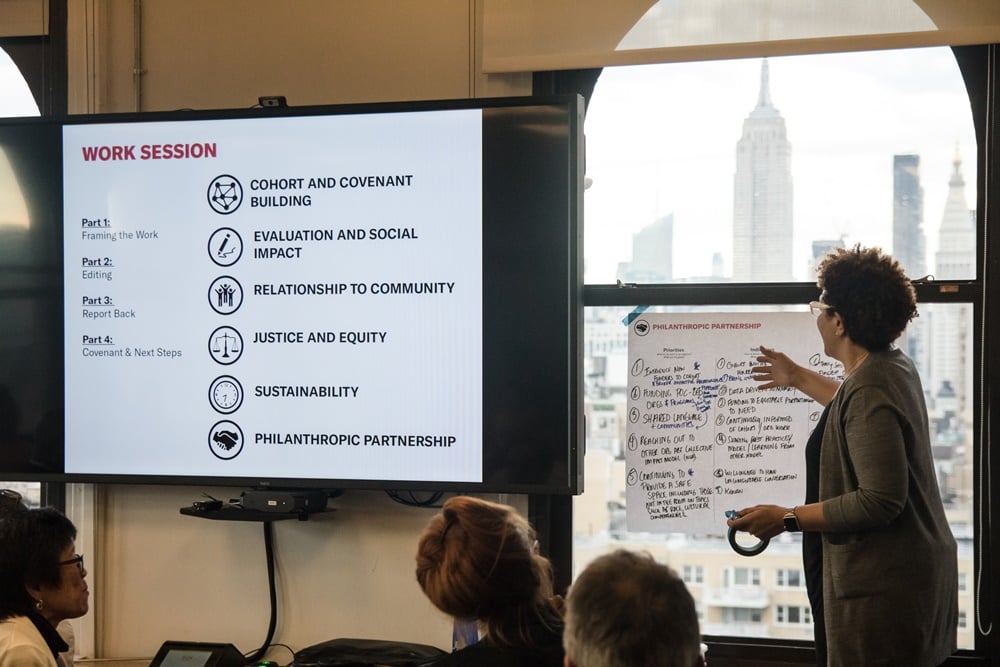
A Kenan Cohort gathering in January 2018. Photo courtesy of Hester Street.
Kenan’s longstanding belief that “a good education is the most cherished gift an individual can receive” is something that Dorian Burton has taken and run with. Burton, who grew up in California with a mother from Compton and a father from neighboring South Central Los Angeles, says educational opportunities were “not necessarily present” in his adolescence. He failed out of high school. It wasn’t until reconnecting with his mother after 10 years of no contact—she had become a university professor by that time—that education became a priority, he says.
With his mother’s encouragement, Burton finished high school after more than five years and went on to attend Penn State, where he received a bachelor’s degree in sociology. Bitten by the academia bug, he went on to earn a doctorate of education leadership at Harvard.
The narrative around African American communities “tends to be deficit-based,” Burton says. “Philanthropy can always push that deficit-based narrative. Philanthropy rewards people who can tell the worst story the best [way]. We’re all familiar with these models.”
What is unique about many of Kenan’s grantee organizations, he says, is “they talked about the communities for what they really were and the brilliance that lives there, the brilliance that lives in the artists and the moms and the fathers and the kids.”
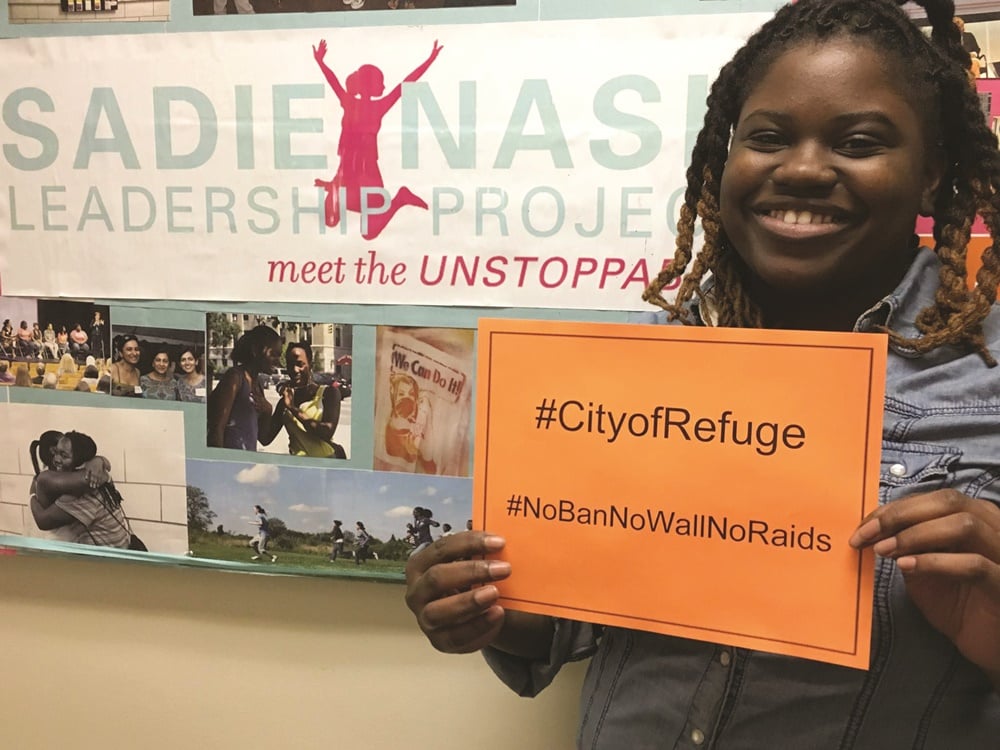
A participant at the Sadie Nash Leadership Project during “City of Refuge” a 24-hour action to stop the refugee ban and preserve temporary protected status.
Real Community Support
Not all of Kenan’s grantee organizations are doing social practice work, but “all are socially engaged on some level,” Jackson-Dumont says.
Ilesmani of the Laundromat Project noted the rarity—and the value—of Kenan’s $150,000 grant for general operating support, which could cover anything from electricity bills to new programs. “The beauty of that absolute autonomy is being able to ask the question: Where are there holes? Where do you need to shift this money and be able to support things like rent and professional development?”
In addition to holding art workshops at community gardens and laundromats—the logic on the latter venue being that laundromats are a place where low-income community residents frequently go and have down time—the Laundromat Project also holds weekly programs at an apartment in the South Bronx. It uses one of the bedrooms for an artist residency.
“We do a year-long artist residency for a Bronx artist. Often it’s their very first studio space. They then have an open studio once a month and do workshops for people in the neighborhood,” Ilesanmi says. The initiative means “you don’t have to travel to Manhattan to be an artist-in-residence.”
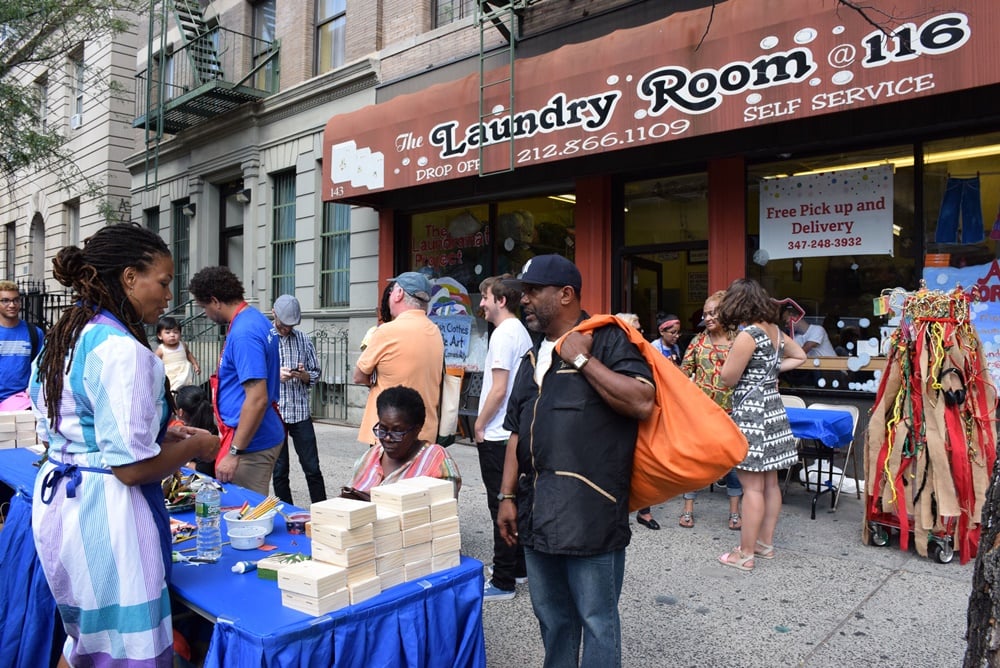
Neighbors gathering at a sidewalk art-making workshop at The Laundromat Project’s Field Day 2015 in Harlem. Photo by Ray Llanos. Image courtesy The Laundromat Project
This is exactly the kind of outside-the-box thinking that excites Burton and his fellow trustees. “These are the leaders that we need to get behind,” Burton says. “Kemi works in the community every day. I could never tell her how to do her work the way that she does it. But I can support her in it.”
